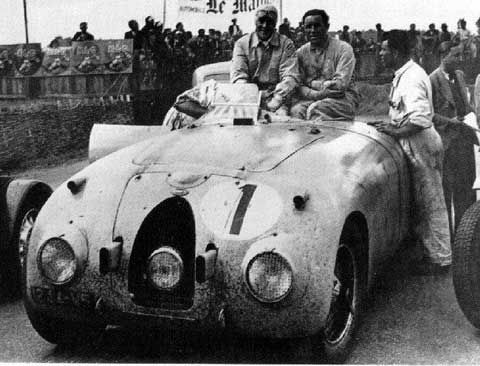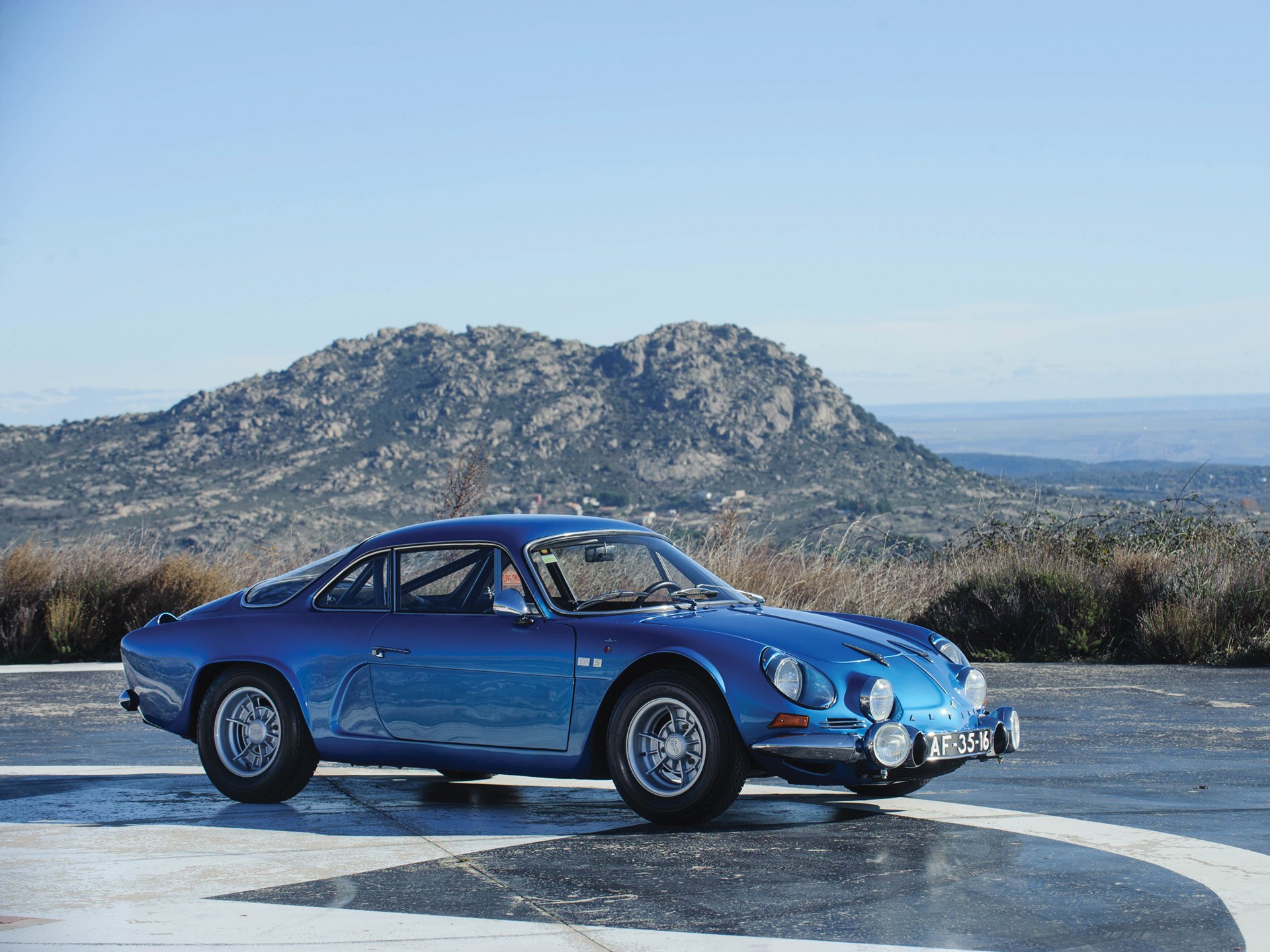5 French motoring victories to remember
Vive la France! In the wake of its definitive win at the World Cup, the French are jubilant, partying in the streets and dancing underneath the Eiffel Tower. The whole country’s in a good mood, and rightly so.
And not for the first time either, at least when it comes to motorsport. Delve into France’s racing past, and you’ll find plenty of instances where le Tricolore was waved proudly in triumph. Here’s a look back at five times the French were all about the liberté, egalité, and fraternité of speed.
1913 Indy 500 – Jules Goux and the DOHC Peugeot

Legend has it that French racing driver Jules Goux and his riding mechanic consumed six bottles of champagne over the course of six and a half hours and 200 laps at the Indianapolis Motor Speedway. This is, of course, completely untrue. It’s just reinforcing unfortunate stereotypes.
They only drank four bottles, of course.
Goux was, like all racing drivers of the time, something of a devil-may-care hero. Having previously won the 1912 Sarthe Cup at Le Mans, he was well prepared to take on the grueling and dangerous Indy 500, becoming the first Frenchman to win America’s most prestigious, dangerous, and long-lived race.
The Peugeot in which he did it was something of a technical marvel. Its four-cylinder engine was of smaller displacement than its rivals, and it featured double overhead camshafts and four valves per cylinder. A century later, most modern engine configurations use the same basic approach. Goux managed an average of 76.59 mph over the race, and won $20,000 for his trouble.
1939 24 Hours of Le Mans – Jean-Pierre Wimille, Pierre Veyron, and the Bugatti Type 57C Tank

Everyone saw war looming on the horizon. The Spanish Civil War had already shown the might of the German blitzkrieg, and the clock was ticking down to worldwide Armageddon. Even so, the best cars and drivers in the world gathered on June 17, 1939, to compete in the 24 Hours of Le Mans. It would be the last Le Mans for a decade.
It was won by a truly heroic French team, driving a truly beautiful French car. The Bugatti 57C Tank was sleek, modern-looking, and aerodynamic, a hint at the likes of the Jaguar D-types that would follow decades later. It was also Bugatti’s only entry in the race, Ettore Bugatti having declared that, as there was only one outright winner in a race, one car would be sufficient. It was Bugatti’s last major motor racing victory.
Both Jean-Pierre Wimille and Pierre Veyron were accomplished racers, though the Le Mans victory would be the highlight of Veyron’s career. Both men doubled down on proving their steel in the years that would follow—Wimille joined the secretive Special Operations Executive and Veyron was involved with the French Resistance, fighting against the German occupation. Both survived the war, and both were awarded France’s highest award, the Légion d’Honneur.
1973 Monte-Carlo Rally – Renault Alpine A110 1-2-3

Now reborn as a modern mid-engine sports coupe that will give the Porsche 718 Cayman a run for its money, the Renault Alpine is the essence of lightweight French racing prowess. Imagine all the clever little innovations that make the Citroën 2CV such a delightful motoring soufflé, and then imagine that engineering effort applied to something that could actually get out of its own way.
Properly driven, the Alpine A110 could do that and then some. Having previously recorded successes in various European rallying events and at the 1971 Monte Carlo rally, the Renault-powered Alpine was nimble and eager, ideal for the tight confines and shifting weather conditions of the Col de Turini.
The 1973 running of the Monte Carlo marked a beginning, as it was the first rally run in the FIA’s new World Rally Championship (WRC) series. The Renault-Alpines dominated the race, led by Jean-Claude Andruet and his co-driver Michèle Espinosi-Petit, nicknamed “Biche,” (meaning darling, or honey). At the end of the rally, the Alpines came first, second, and third, draping the entire podium in French racing blue. Renault-Alpine won the first overall WRC championship outright, a comfortable 60 points ahead of Fiat.
1985 Formula 1 and Pikes Peak – Alain Prost and Michèle Mouton

The 1980s saw two of the most famous French racing drivers rise to the high points of their careers, albeit not at the wheel of French cars. In fact, it is sometimes reported that Alain Prost, the Professor of F1, was occasionally annoyed that France claimed his championship for herself since his McLaren MP4/2B was British, the engine German, and the sponsor American.
However, as France’s first Formula 1 champion, Prost was a hero to all of France. He had already cemented his reputation in 1981, winning his first Formula 1 race behind the wheel of a Renault, and France forgave him the move to the McLaren team when he won five of the sixteen Grand Prixs outright, and took the world title. Later, his rivalry with Ayrton Senna would force fans to pick sides. In 1985, however, Prost was France’s undisputed champion.
France had another in the brilliant Michèle Mouton, the ground-breaking rally driver. Born close to the mountains, she was a natural at rallying, starting out on Alpine A110s, and progressing to the Porsche 911 and the Lancia Stratos. In 1975, she and fellow racers Christine Dacremont and Marianne Hoepfner won the 2.0-liter prototype class at the 24 Hours of Le Mans in an ROC-Simca.
Even with a long resume of racing victories, when Mouton joined the Audi Sport team there was a certain amount of grumbling about the inclusion of female drivers. That grumbling stopped dead at the Rally Sanremo in 1981, when Mouton piloted her 300-hp Audi quattro to the win. The next year, she finished the season a mere 12 points behind Walter Röhrl.

And in 1985, the Pikes Peak Hill Climb found itself crowning a Queen of the Hill for the very first time. This time Mouton’s Group B Audi S1 was tuned to 600 hp, and she broke the three-year-old course record by some 13 seconds, setting a time of 11 minutes 25.38 seconds despite hitting a hailstorm part-way up. The performance got up the noses of a few Pikes Peak good ol’ boys—Michèle just challenged them to a race back down as well.
2007-2010 WRC Championship – Sebastien Loeb and the Citroën C4 WRC

Sébastien Loeb is the best argument that the French have successfully completed a program to replace mankind with robots. His driving has a machine-like precision, no matter what surface, and he is the most successful WRC racer of all time, with nine championship wins between 2004 and 2012.
The ideal match for this level of perfection? The Citroën C4 WRC, introduced in the 2007 rally season. Restricted to 320 hp and fitted with a six-speed sequential gearbox, the all-wheel-drive C4 proved unbeatable on tarmac stages. That’s literally unbeatable: over four years and 13 pure tarmac rounds of WRC racing, the combination of C4 and Loeb was never beaten. Not once.
Honorable Mention: 1979 French Grand Prix – Rene Arnoux vs. Gilles Villeneuve
The 1979 running of the French Grand Prix was won by Jean-Pierre Jabouille in a Renault RS10, a first win for both Renault and a turbocharged Formula 1 car. However, history has relegated this achievement to something of a footnote because of what happened in Jabouille’s wake.
Considered the finest piece of racing in F1 history, the two lap battle between Rene Arnoux’s Renault and the Ferrari 312T4 of the incandescent French-Canadian Gilles Villeneuve still echoes today, even though neither man would win the race outright. The two changed places, banged wheels, and fought with gloriously elegant ferocity of the sort that would have pleased any of the Three Musketeers.
In the end, Villeneuve squeaked out second place, but as soon as the race was finished, the men leaped from their cars to embrace. It was a instant that displayed the brotherhood of racing, and the pure élan that’s required to achieve legendary status. It was a very French moment: not just a victory at stake, but the honor of worthy competition, the thrill of the chase.

